I think I might be falling more in love with the dirty pour. At first, I wasn’t sure. It can look sort of regimented, stripey, too formal. But combine the dirty pour with some nice graduated colors, or a limited palette, tilt it well and you could fall in love too.

The dirty pour sometimes gets a bad press. Not only is the name a bit off-putting, but sometimes the results can be overwhelming. Just too much going on – cells everywhere, too much color, too formal in the stripey design.
If you prefer the randomness of the flip cup, its understandable that the dirty pour might not be your favorite. But I encourage you to change it up a bit, try something different and give the good-ole dirty pour a chance to shine! I have seen some stunning paintings created with the dirty pour, and can only hope to make one as good one day.
Materials used in this painting
Art Alternatives acrylics in titanium white, ultramarine blue and silver
Blick Student Acrylics in cobalt blue
Pebeo Studio Acrylics in iridescent blue green
Artists Loft acrylics in Metallic Cobalt Blue (which look green to me)
Floetrol
Treadmill Belt Silicone
Gallery wrapped canvas
Polycrylic gloss protective finish
8oz squeeze bottles
Recipe
Paints are mixed approx 2 parts paint to 1 part Floetrol, plus water as needed for a creamy consistency. Silicone oil is added at a couple of drops per color.
Video
So that was pretty cool. For some reason I can’t get the video or photos to come out very well for this one. It all looks very blue when in fact there is a lot more white and green and a lot more contrast than my camera wants to show. It’s pretty cool. So give the dirty pour a chance today!
As usual, here is a slideshow of some photos of this pour, both wet and dry and close ups of the details.
Frequently Asked Questions
1. How do I create stripes in a dirty pour?
Stripes can be created by the way you pour your mixed paints, usually by doing a linear pour in a straight line across the canvas.
2. Can I use blues and greens exclusively for a themed pour?
Yes, using a specific color palette like blues and greens can give your artwork a thematic coherence.
3. How do I ensure the vibrancy of the colors?
Using high-quality, vibrant acrylic paints and avoiding overmixing can help maintain color vibrancy.
4. Can I manipulate the stripes after pouring?
Yes, tilting the canvas can help in manipulating the stripes and patterns.
5. How long does a striped dirty pour take to dry?
It usually takes between 24 to 72 hours to dry completely.
6. How to seal a striped dirty pour painting?
A clear, UV-resistant sealant is recommended to protect the finished artwork.
7. Is this technique suitable for beginners?
Yes, with some practice, beginners can achieve beautiful results with this technique.
After being told in high school that she was so bad at art that she should switch to another subject, Deby didn’t paint again for 35 years. Then a stroke released a new wave of creativity and she began exploring with dot painting, abstract and eventually acrylic pouring, and at last the joy of working with color returned. You don’t need ‘talent’ to be an acrylic pouring artist – just enthusiasm, some basic instruction, and a willingness to try, fail and try again. Paint along with her and learn from her many mistakes, and you’ll soon make great art together.

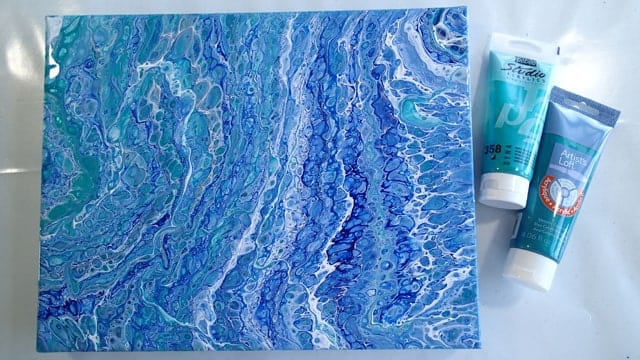
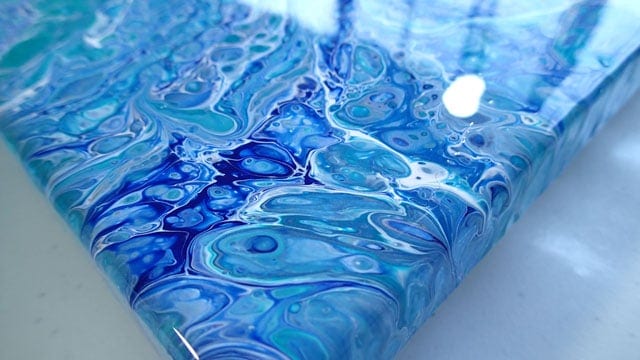

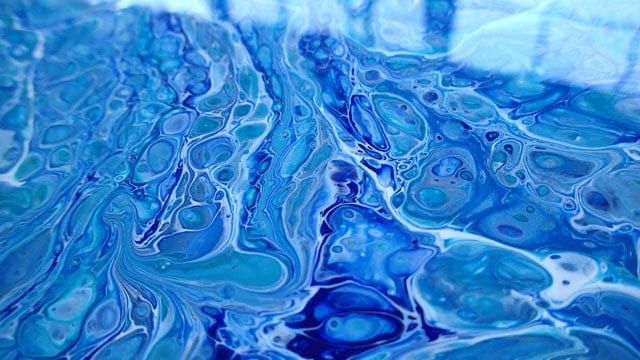

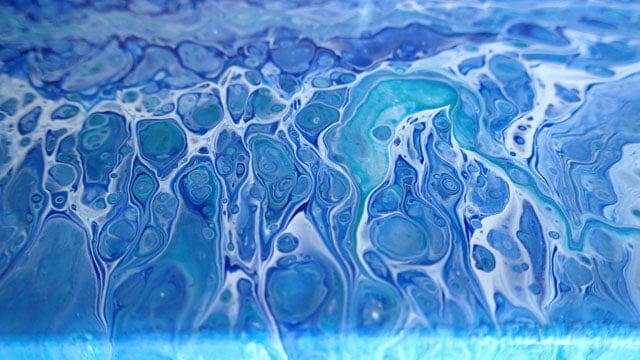
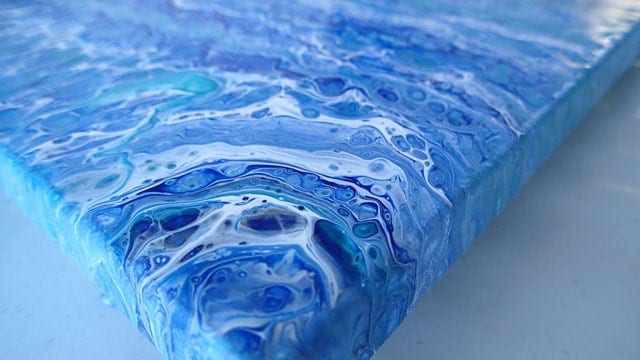
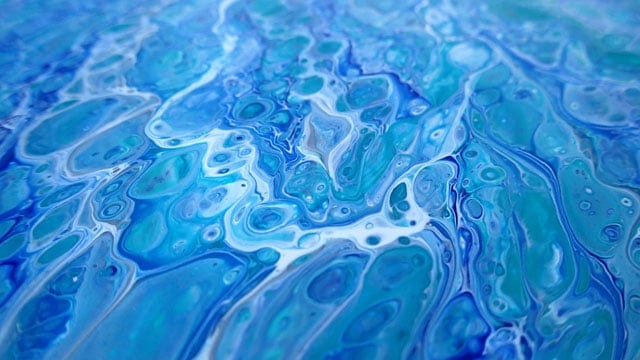
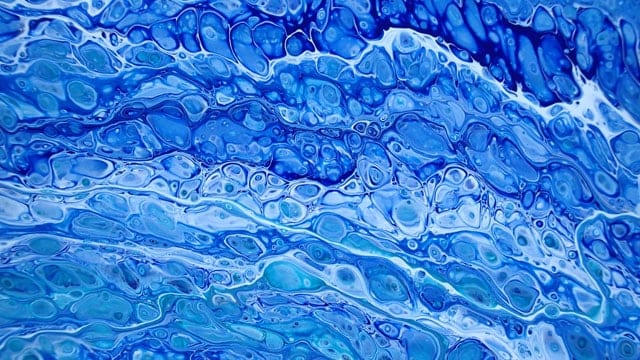



I am having trouble getting large cells. I can get small cells quite consistantly, but I can seem to get the large cells that I see in your pictures. I am using the same formula and type of materials. What am I doing wrong
Are you stretching the cells out that you make? Create your cells first before you move the paint, either by your formula, your additives or by using the torch. Then stretch out those cells to make them bigger by tipping the paint to cover the canvas. You may want to use slightly less paint than you have been using to encourage you to tilt more. You can also try switching to the hair serum for cells if you haven’t tried that already, because it does seem to make larger cells come through naturally.
Love your quote at the bottom of your story .if you dont mind i would love to share that with my daughter i paint everthing from saw blades to canvas so i always wanted to help her find sonething we both can be good at shes always wanted to learn how to be talented painter i think your quote fits new artist like her .im still learning everything 4 acrilyc poors and will be teaching her soon love your work . — alanna aurand —
I am using a dirty pour on wood. I used acrylic paint, Floetrol and NO water. I am getting cracks when it dries. What can I do to get rid of the cracks? Any suggestions would be greatly appreciated.
Are you using Apple Barrel white paint? It’s known to cause cracks, so that could be the issue if you’re using it
Originally I was able to get quite a lot of cells, big and small. Now, I can only get “crazing”, light lightning strikes on my paintings. What am I doing wrong? How can I get back to creating cells?
Thanks!
You mentioned in a previous comment about making cells to use HAIR SERUM. What product is that? Sounds very interesting
Here’s a post about the hair serum we use: https://acrylicpouring.com/testing-dimethicone-day-3-coconut-hair-serum/
A awesome we all know the smaller the canvas the more production of cells ????????????
Two problems:
I am a beginner but have made several pours. They don’t seems to be shiny and glossy when they dry, although they looked promising when wet.
Secondly: On one of my pours the paint all seemed to ‘run away’ from one section of the canvas. Nothing stuck to it and you can see the bare canvas there, even though I I poured over that area.
probably too thin. also make sure surface starts off clean.
Hello
Im confused every where I read it states 1 parts paint to 2 parts flotrel but your receipe is opposite.
Thanks
Janet Elliott